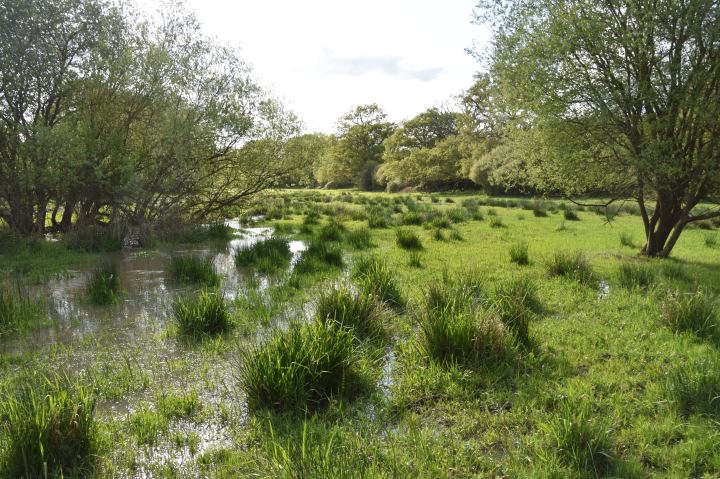Continuing our series on rewilding, Jens-Christian Svenning from the Center for Biodiversity Dynamics in a Changing World, Aarhus University, focuses in on trophic rewilding. Here he considers the foundations and open-ended nature of this approach, and explains why there is still plenty of room for more research in this area.
There is rapidly increasing interest in rewilding as an alternative to more human-controlled approaches to nature management. Reflecting its wide and intuitive meaning, rewilding as a term has not adhered to strict criteria. Nevertheless, there is a focus on restoring natural processes and reducing human management with the aim of achieving more self-managing ecosystems. The increasing popularity of rewilding approaches is likely, in part, driven by a wish for wild nature under its own control and also from a practical perspective.
Nature management such as livestock grazing, mowing, tree felling, or prescribed burning can be costly and/or impractical. It may be difficult to find available people or domestic animals. For large areas, it may simply be out of the question. Also, it may not be clear which interventions are actually optimal for biodiversity – but we do know that, in the majority of cases and as things currently stand, species have evolved and lived most of their ‘species lives’ in ecosystems controlled by natural processes. At the same time, ongoing global change forces a shift from static preservation of a given ecosystem state towards more dynamic perspectives.

Most rewilding projects focus on re-establishing large-bodied animals (megafauna) and fit under the definition of trophic rewilding, i.e. an ecological restoration strategy that uses species introductions to restore top-down trophic interactions and associated trophic cascades to promote self-regulating biodiverse ecosystems. Top-down trophic interactions are effects of the upper levels of food webs (carnivores and herbivores) on lower levels, with trophic cascades broadly defined as impacts across multiple food web levels.
There are at least two key reasons for the focus on megafauna. Firstly, it is becoming clearer that humans have selectively removed large animals from ecosystems across the world, from prehistoric times until today. This process is still happening, in many parts and megafauna-rich ecosystems are more or less on par with what is seen in well-preserved African natural areas that have been the norm on evolutionary time scales for most terrestrial regions across the globe. Secondly, there is increasing evidence that large-bodied animals play, or have played, important roles in structuring natural ecosystems and maintaining the biodiversity within them.
The main ecosystem effects come from large herbivores via their impacts on vegetation structure through herbivory, disturbance, and seed dispersal. Carnivores can also be important, mainly via their effects on herbivores. It is sometimes assumed that herbivore effects will be strongly reduced when top carnivores are restored, which is an over-simplification. Herbivores may escape regulation by predation via large body size or certain behaviours (e.g. forming large migratory herds that saturate territorial carnivore populations). Top-down regulation also does not necessarily mean that herbivores will have little effect on vegetation, but just that the effects will be smaller than without predation.

There are limited empirical studies explicitly on rewilding, but these generally suggest beneficial effects. Important under-exploited information sources include cases of unintentional rewilding, wildlife comebacks, exotic megafauna and the rich literature on the ecology of present and past megafauna. We can make some general predictions about the impacts of trophic rewilding based on this. The most notable of these relate to increased environmental and vegetation diversity. These effects increase with the growth of herbivore species and functional diversity, and when initial environmental conditions are heterogeneous due to non-random megafauna habitat use, as well as increased species diversity at local and landscape scales. To test these and other predictions and increase our knowledge base, a key opportunity lies in a rising number of practical trophic rewilding projects, provided monitoring and research programs become associated with them.
Given its focus on self-regulating ecosystems, trophic rewilding constitutes an inherently open-ended restoration approach. It recognises that ecosystem behaviour involves continual change and that goals therefore need to be defined in terms of trajectories rather than end points. In general, goals should not focus on maintaining a certain static ecosystem structure or species composition.
Despite its inherent open-endedness, trophic rewilding is often seen as an attempt to reconstruct a certain past state. This partly reflects the ‘re-‘ in the term ‘rewilding’ – often a reference to past base-lines. However, this is a misunderstanding. The use of past base-lines is not for restoring ecosystem conditions to a specific prior state, but rather to understand how ecosystems functioned on the evolutionary time-scales, often across strong environmental changes, where current biodiversity evolved. This should allow us to better understand the potential for biodiversity at present, the adaptations of current species and what factors are important for promoting biodiversity.
Trophic rewilding often raises controversy by challenging established perspectives on landscape and nature management, both among scientists and the public. Implementation should always be in careful consideration of interactions with society, assessing both benefits and problems. The design of rewilding projects also needs careful consideration from both ecological and societal perspectives. These practice-oriented aspects themselves offer rich areas of much-needed research around rewilding.
Read more in our rewilding series:
Getting everyone on board with rewilding by Nathalie Pettorelli
Decolonising rewilding by Kim Ward
Urban rewilding as a collaborative experiment by Cecily Maller
Good fences make good neighbours by Stephen Carver
Rewilding in Britain: a case study by Sophie Wynne-Jones and Chris Sandom
Why rewilding? Leaving denial and magical thinking behind by David Johns

9 thoughts on “Trophic rewilding: restoring top-down food web processes to promote self-managing ecosystems”